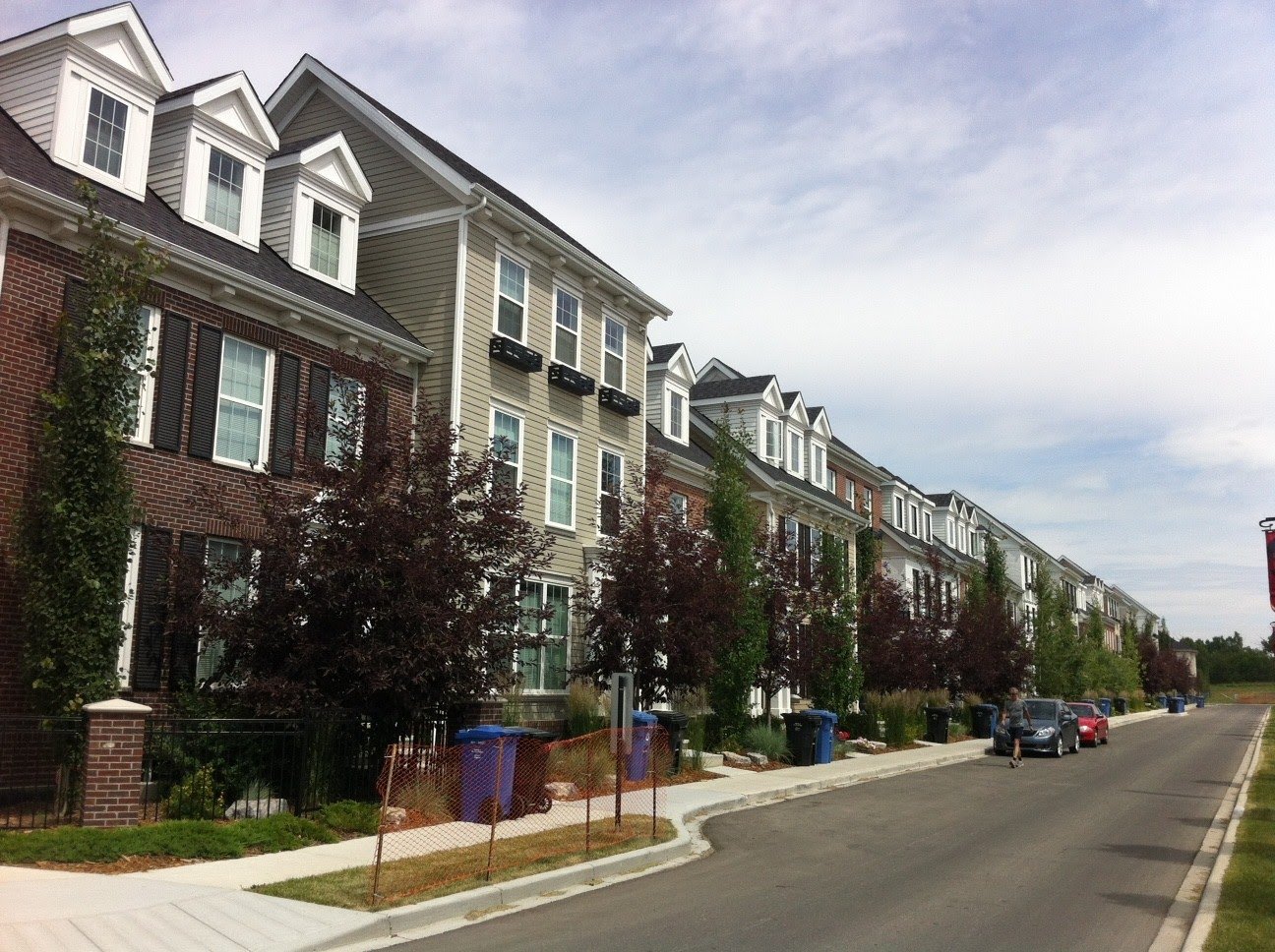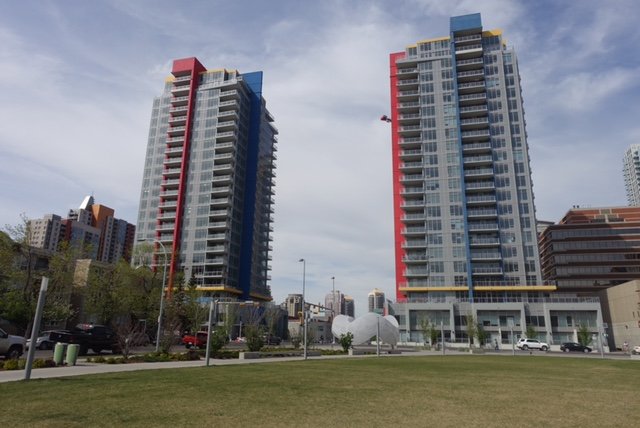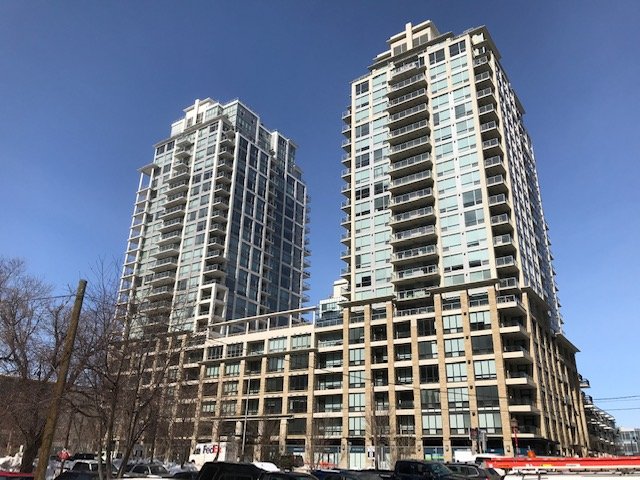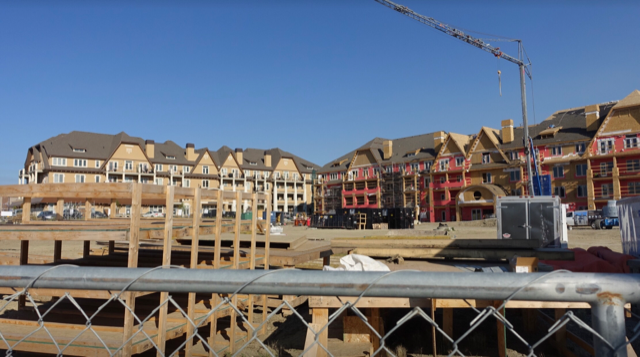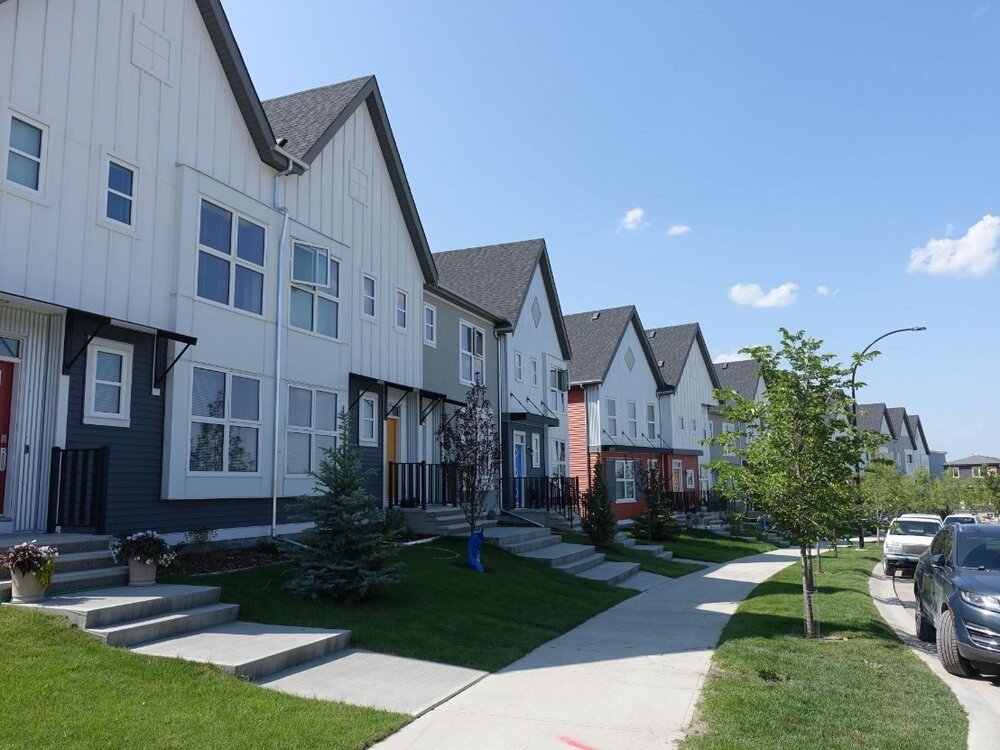A concise guide to Calgary for potential immigrants
Calgary is Canada’s third most ethnically diverse city with 120+ languages spoken by about 400,000 immigrants from around the world. While Calgary is a city of 1.5 million people it is divided into 180+ different communities each with their own name, charm and community centre.
Postcard view of Calgary’s downtown skyline
Calgary’s Nagar Kirtan Parade
Neighbourhood celebration
Chinatown
Calgary is an emerging global city. It has been ranked as the in the top 10 most liveable and affordable cities in the world. The Economist Intelligence currently ranks Calgary as the 3rd most liveable city in the world tied with Zurich, Switzerland ahead of Vancouver, Toronto or Montreal. Calgary is also the 3rd most ethnically diverse city in Canada.
Backstory: Calgary is a place where people have been coming for over a century to work hard and get ahead. I remember one of the first things I heard upon moving here is “you have to giv’hre!” I moved to Calgary in the early ‘80s, never expecting I would still be here 40 years later. In many ways Calgary still has a pioneering spirit.
Calgary’s Bow River (one of the world’s best fly fishing rivers) with downtown in the background and the city’s brilliant blue sky.
Small City / Small Town
Kensington Village
Living in Calgary is like living in a small town or city ranging in size from 5,000 to 25,000 people. Calgary is home to 7,000+ parks, which means everyone is within a 5 minute walk to a green space.
Calgary has two parks that are significantly larger than New York City’s Central Park as well one of the world’s largest skate parks, and Olympic Park (skiing, snowboarding, mountain biking and Zip Line) within the city limits.
The City also boasts over 100 off-leash dog parks. Calgary’s neighbourhoods are linked by a 1,000+ km system of walking and cycling paths, including a 135-km route that circles the city.
Walking and cycling are more of a recreational activity in Calgary than a means of transportation, however there is a cycling network in the City Centre.
In Calgary even the freeways are called trails, so when you see on a map Deerfoot Trail or Crowfoot Trail, that is a freeway not a dirt trail. FYI: All of Calgary’s major roads have names that reflect the city’s indigenous peoples.
In many ways the City is defined by its rivers and highways. The rivers and the parks along the rivers are where people play and the highways divide the city into four distinct quadrants each with their own sense of place. The southwest which includes the central business district is Corporate Head office District, the northwest which includes two major post-secondary schools is the Learning District, the northeast is the Airport & Ethnic District and the southeast is the Warehouse District.
Everyday Tourist Tip: If you are thinking of moving to Calgary and looking for a place to stay here is one best places to start looking for long-term townhouse rentals.
Calgary offers a diversity of housing options from single family to high-rises, from row housing to subsidized housing for those in need. This is a transit oriented development next to a LRT Station, Crowchild Trail, Brentwood Mall, the University of Caglary campus and its new Innovation Quarters.
Climate
Yes Calgary has cold winters. It is common to have a 7 to 10 days stretch of -30 degrees Celsius temperatures. Fortunately most of the winter is relatively mild for a northern prairie city due to warm Chinook winds from the Pacific Ocean. February is the coldest month with average daily high of -2 and average low of -13 over the past 10 years. During the 1988 Winter Olympics in February Calgary was warmer than Miami Florida. Summer days are warm while nights are cool, unlike the hot and humid summers of Toronto and Montreal.
Calgary is famous for its 320+ days of sunshine – ironically winter is sunnier than the summer. Calgary is Canada’s sunniest major city.
Calgary is home to 100+ dog parks where you get to meet people of all ages and backgrounds. This was in February.
Culture & Festivals
Calgary is home to a diversity of cultural events and facilities. The Glenbow Museum is one of Canada’s largest and Arts Commons is one of the largest performing arts centres in North America with concert hall and four theatre spaces, in addition to the Jubilee Theatre and state-of-the-art Bella Concert Hall at Mount Royal University.
The City is home to Canada’s National Music Centre museum and a budding music scene including the SLED Island music arts festival. There are music festivals year-round, ranging from folk to country, from blues to alternate music. Calgary has a philharmonic orchestra, dozens of theatre companies and choirs.
Beakerfest bubble
Calgary has 80+ festivals including the world famous Calgary Stampede, SLED Island music and art festival and Beakerhead a smash-up of science, technology, engineering and art.
In addition, there are many smaller ethnic festivals, from Chinese New Year to Nagar Kirtan parade and weekend.
Calgary boasts a diversity of beautiful churches including the Calgary Alberta Temple (Mormon), Swaminarayan Temple (Hindu), The Avatamsaka Monastery (Buddhist), Baitun Nur mosque (Canada’s largest mosque). The City is home to several cultural centres from the Sikh’s DashMash Centre serving a community of 100,000 Calgarians to downtown’s Chinese Cultural Centre.
Recreation
Calgary is a big recreational city. In addition to having two of the world’s largest YMCA recreation centres, the city it home to numerous regional and local recreation centres with libraries, gyms, dance studios, gyms and meeting rooms. While hockey is Canada’s national sport, more kids play soccer than hockey in Calgary. And yes we have two cricket pitches.
Shaw Millennium Park
Walking and cycling along the 1,000+ pathways system is a popular family activity. In addition to the City’s 1,200 playgrounds there are another 1,000 playgrounds in schools, community centres and other spaces.
There is even a huge man-made lake in the middle of the city for rowing and sailing.
One of the great things about living in Calgary is the easy access to the Rocky Mountains just one hour away.
Calgarians are very active, be it walking and cycling, rock climbing or speed skating, mountain biking or sailing. In the summer it is very popular to enjoy a fun float downtown the Bow and Elbow Rivers.
One of many pebble beaches along the Bow and Elbow Rivers.
Caring City
While all Canadians benefit from universal healthcare, all provinces and cities are struggling to provide adequate and timely healthcare given the increased demands and costs of a growing and aging population, as well as the pandemic.
While Calgary is home to several homeless shelters (including one of the largest in North America) and dozens of not-for-profit agencies who are building new subsidized housing complexes every year and managing a diversity of housing options and programs to help those in need. The same is true for the increase in street drugs and individuals suffering from mental health illnesses.
Calgary is home to four major hospitals including the Foothills Medical Centre one of Canada’s largest and most comprehensive medical campuses, including the new state-of-the-art Calgary Cancer Centre.
When it comes to income inequality in Canada, Toronto has the highest, followed by Calgary and then Vancouver.
Like all North America cities, Calgary is struggling with increased poverty, racial and colonialism issues.
Calgary Drop In Center is one of the largest and most attractive homeless shelters in North America.
Food & Groceries
In addition to chain store grocers, Calgary is home to several framers’ markets including Crossroads Market and two Calgary Farmers’ Markets. During the summer there are 20+ community farmers’ markets across the city. In the northeast quadrant of the city there are dozens of smaller ethnic food grocers and butchers from around the world. In addition, the Asian food focused T&T Supermarket has four locations in the city.
From a restaurant perspective Calgary offers a wide selection of ethnic foods from Africa to Uzbek, from Thai to Himalayan, from Europe to Japan and Korea. International Avenue (17th Ave SE) has been celebrating Calgary’s diversity of restaurants and food shops with its "Around The World In 35 blocks” food tours for 25+ years. Downtown Calgary has recently opened up two Food Halls which feature several of Calgary’s award winning chefs.
Calgary also has a well-established café and coffee roaster community dating back to 1985 when the Roasterie opened in Kensington Village. Today Calgary is home to a dozens of independent cafes and roasteries and several award winning baristas.
Employment
While the oil & gas industry is Calgary biggest employer the city has diversified over the past 30+ years. Today is it an important Inland Port with mega warehouse distribution centres for Amazon, Walmart, Costco, Home Hardware, Tim Hortons and Canadian Tire and others.
Calgary is the headquarter city for Canadian Pacific Railway one of North America’s leading railways and the Calgary Airport is not only the hub city for WestJet Airlines, but is a major cargo airport. Calgary is one of North America’s fastest growing tech hubs, as well as major health and education centre. Calgary is considered by many to be one of North America’s leading entrepreneurial cities.
Many newcomers find Calgary’s psyche to be similar to an American city. This is not surprising as in the late 19th century, pioneer ranchers brought cattle from the US to foster Southern Alberta as Canada’s cattle country and throughout the 20th century US oil companies played a major role in foster Calgary as the headquarters of Canada’s oil patch. The Calgary Stampede the city’s quintessential experience was created by Guy Weadick an American; this wild west show has more in common with US cowboy history than Canadian.
Calgary is a major head office city not only for oil and gas companies but others like Canadian Pacific Railway, Brookfield Residential and West Jet Airlines.
Calgary is also a huge warehouse distribution centre. It is one of North America’s key inland ports.
Education
Canada is considered to have one of the best educational systems in the world, with Alberta’s receiving an A+ ranking. Canada’s education system overall was ranked 10th in the world by the Program for International Student Assessment run by the Organisation for Economic Co-operation and Development Canada as ranked 10th, while the US was in the 40s.
Calgary is home to two major universities (University of Calgary and Mount Royal University), a major technology and trade college (SAIT) and Bow Valley College ith programs ranging from English As A Second Language to 3D Animation and Gaming Technology. Calgary has a kindergarten to Grade 12 public school system, as well as Catholic system, charter and private schools.
Souther Alberta Institute of Technology campus
University of Calgary campus.
Transportation
Calgary encompasses a large land mass as the majority of the people live in suburban single family homes. Calgarians love their space, their front and back yards. The city has a comprehensive public transit system that includes Light Rapid Transit (LRT), Bus Rapid Transit and a large fleet of buses. Before COVID, Calgary had one of the highest uses of LRT ridership in North America. Today, transit ridership is down for both bus and LRT. Frequency of operation ranges from 10 minutes in high-use areas at rush hour to 30+ minutes at the edge of the city.
The city has 1,000+ km of multi-use pathways shared by cyclists and walkers including 290 km of on-street bikeways and cycle tracks in the inner city.
Most Calgarians own or have access to a car as their main means of transportation. There are several walkable neighbourhoods in the inner city and next to LRT stations were you can live car free depending on where you work.
In 2022, the annual PeopleForBikes ranked Calgary 5th in North America for large cities (300,000+ population) and 21st out of the 1105 cities studied.
Calgary is home to Canada’s third busiest airport from a passenger perspective and fifth from a cargo perspective. From Calgary you can fly direct to 88 destination on 17 different airlines. The airport is the hub for West Jet, Canada’s second largest airline.
Calgary C-train travelling through downtown’s East Village a mega master planned urban village.
Clean City
While Calgary is home to most of Canada’s major oil and gas corporate headquarters, the City is also home to the head offices of many of Canada’s leading alternate energy research. Several of Canada’s largest solar and wind power plants are located near Calgary.
The City of Calgary has invested billions to create some of the world’s most advance sewage treatment plants. Currently, the City of Calgary’s entire operations are 100% operated by wind power, including its light rapid transit system which has been using wind power since 2001. The majority of Calgarians get their energy from natural gas, which provides a reliable source of power to heat homes and other buildings from September to May.
Calgary had a comprehensive recycling program and is home to a state-of-the-art composting facility which has been so successful it is currently being expanded.
Glenmore Reservoir in the foreground with water treatment plant, Glenmore dam, golf course and playing fields with downtown in the backgrounded and inner-city treed communities in the middle. (Photo credit: Peak Aerials)
Last Word
Calgary isn’t for everyone. It is a hybridization of a progressive, pragmatic, pioneer, prairie city with a corporate, conservative, cosmopolitan and creative twist. For many, Calgary is one of the best places in the world to live, work and play and has been for decades. In many ways it is a hidden gem as an emerging global city.
If I had to describe Calgary in three words it would be: Bright, Open & New.
Here are some more links with useful information:
23 Beautiful Places In Calgary
Calgary: The Family Friendly City








